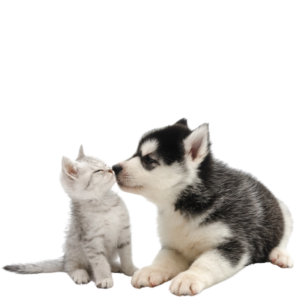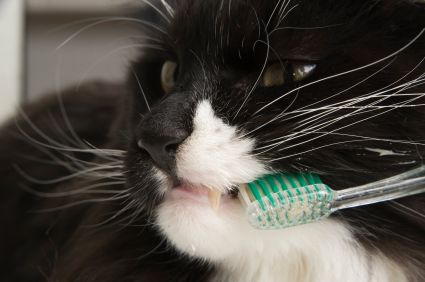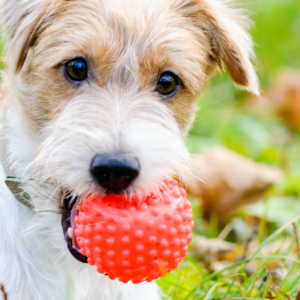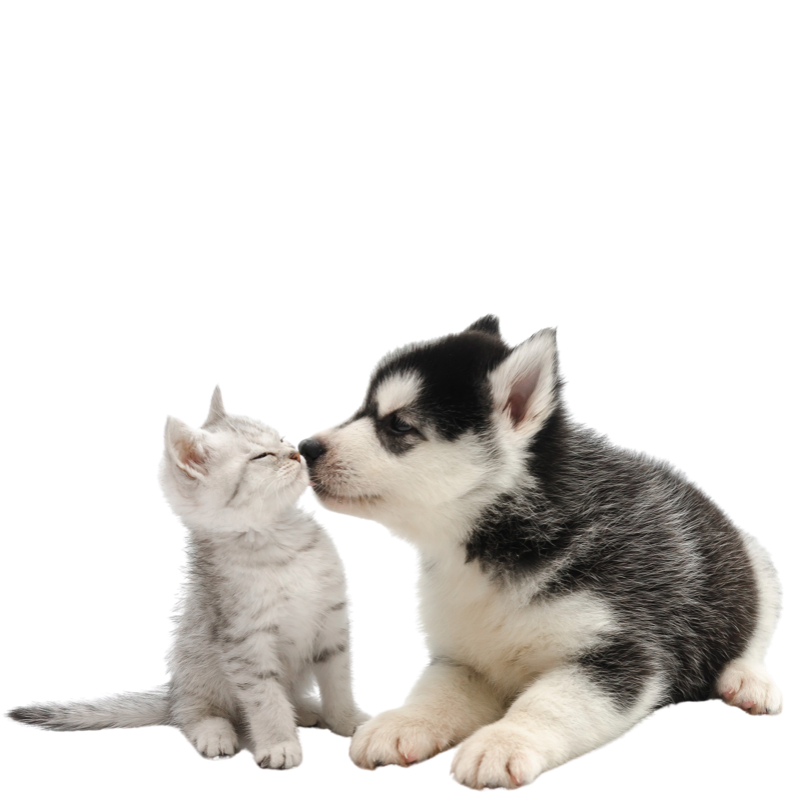A lot of clients think brushing their pet’s teeth is a bigger chore than what it really is. Some clients use a “human teeth hygiene” way of thinking when it comes to their pet’s mouth, and although some techniques are the same, it’s a bit different. Here are some easy steps to show you how simple it can be to brush your pet’s teeth:
1. First off, if you can, its much easier for your pet to get used to you brushing their teeth if you start handling their muzzle and getting them used to putting your hands in and also around their mouth on a regular basis. If you’re starting a little later in your pet’s life, don’t you worry, your pet can still easily get comfortable with this by taking little steps at a time and practicing for a few days. You want to make sure that your pet sees this as being a positive experience and not a punishment, so make sure to give a treat or reward when you’re done.
2. Once you get them used to you being around their mouth, you want to make sure you are positioning your hands correctly so that it is comfortable for you and your pet. The correct technique is to put one hand around the muzzle, so holding the mouth in a closed position. With the other hand, you can now lift the lips and continue to the following steps.
What most people don’t know is that you actually don’t have to concentrate on the inside surfaces of the teeth, most plaque and tartar will accumulate on the outside surfaces. So this means you don’t have to overly manipulate their jaw, the whole thing can simply be done with their mouth closed.
3. Next would be to introduce pet toothpaste. You can start by adding a small amount of toothpaste on your index finger, and just rubbing it on your pet’s teeth and gums. What is recommended, is to start on the canine teeth, work your way down to the back teeth and then front teeth. Don’t forget to be rubbing the gums as well.
If you can find a pet toothpaste with active enzymes, this step will already be helping with tartar build-up as the enzymes will start eating away at the plaque laying on the tooth’s surface. It is very important to mention to only use animal toothpaste, because it’s not harmful like human toothpaste if swallowed and ingested. Also, on the upside, stores sell a great variety of these toothpastes that contain flavors that are more favorable to your furry friend than our conventional “minty” flavors.
4. Once your pet gets used to the toothpaste and being handled, you can gradually start introducing the toothbrush! You should use a special cat or dog toothbrush if possible. These are wider than human toothbrushes and will help simplify your technique (it will cover more surface, without having to brush so much). You want to start by softening the bristles of the brush by running it under water and then placing a strip of toothpaste on it. Start by doing gentle, circular motions on the canine teeth. Then, start brushing in a front-to-back motion on the back teeth and then finally, brushing the smaller, front teeth from side-to-side.
This will clean away the majority of plaque in your pet’s mouth and help reduce tartar build-up, that can then, with time, develop into gum disease if not prevented. For the first few times, make sure you don’t scrub too hard or put too much pressure, this can be uncomfortable for your pet. You can gradually, with time, start putting a little more pressure if your pet doesn’t seem to mind. Be aware, that your pet’s gums will most likely bleed a bit as you are starting out; this is quite normal. The more you brush your pet’s teeth, the easier it will become and you should continue to see nice, shiny, white teeth or start seeing an improvement in their dental hygiene.
If all else fails…
There is nothing as better as brushing your pet’s teeth daily for prevention of dental/gum disease and to maintain healthy oral hygiene, but you’ll be happy to know that there might be some alternatives. If your pet is just too difficult and won’t endure this kind of procedure, you might want to try some of these:
- · Dental diet
- · Dental chews
- · Dental enzyme water additives
- · Oral hygiene enzyme rinse or sprays
- · Some enzyme-covered chew toys
Best of luck and happy brushing,
Jenna




